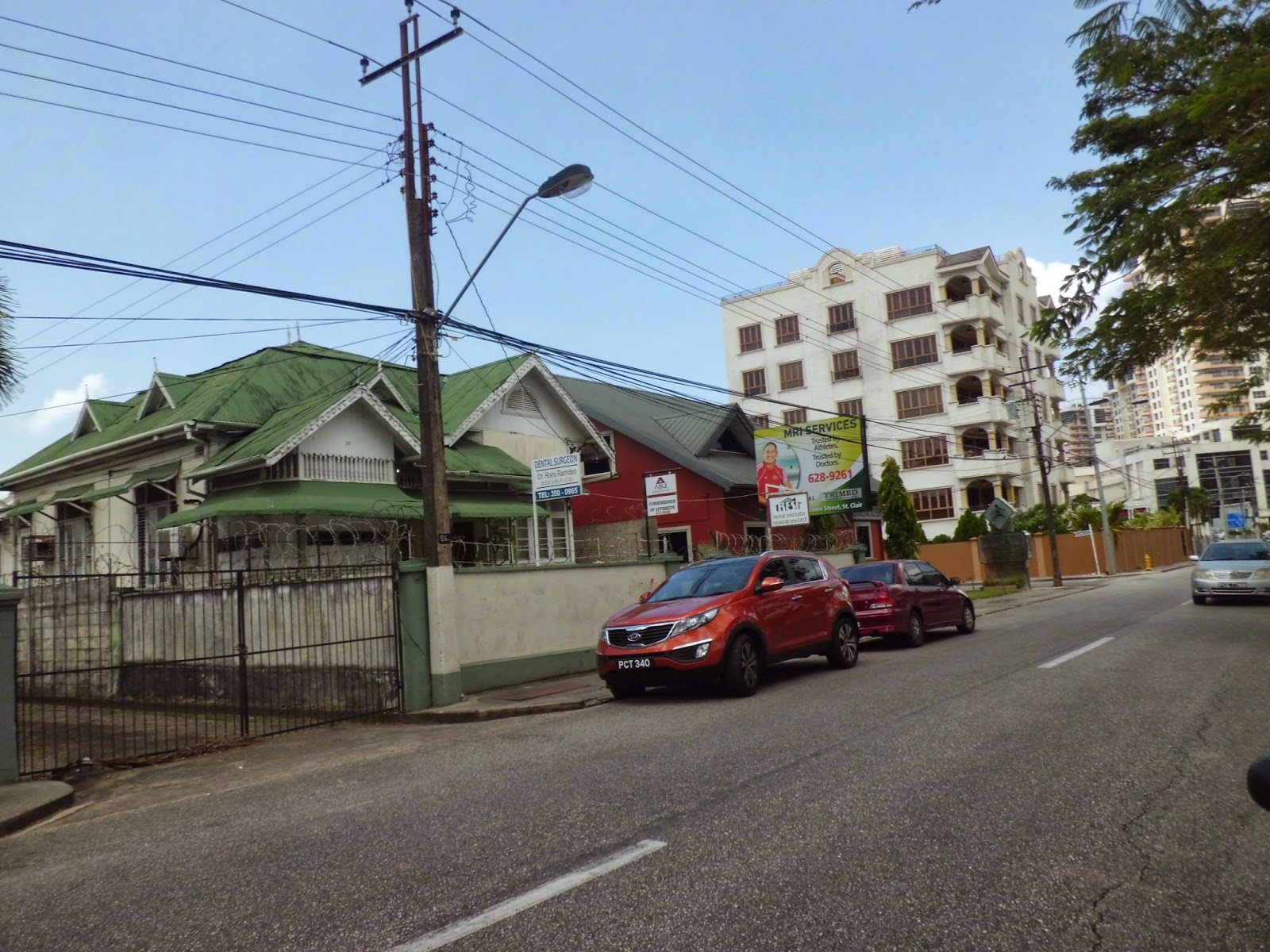St Clair Belmont
Art along Hayes Street
The sun was blistering as the St. Clair group of geographers exited our maxi. Greeted by the snow cone man serving the King George V Park users we refused to be tempted. Not so for the driver! We set out along Hayes Street where anyone would appreciate the physical layout. Artwork depicting local culture, a park, people from various surrounding communities (having spoken to a few users), building architecture, old and new, colonial essence and contemporary design. Jane Jacobs would be in awe. We made our way through St Clair Avenue passing the residential houses behind well fenced walls. No people were seen on the roads! We came across a smaller park where there appeared to be residents however the collective group seemed intimidated and were unwilling to speak to the people in the park who appeared mostly white. We scuttled off, myself and one colleague disappointed by the missed opportunity for some inside information! Crossing Alexendra Street government and financial institutions, and much diplomatic missions littered the area. We returned to Hayes Street passing the St. Clair Medical Centre at the end of our allotted time. With a birds view we noted the commercial businesses east of the King George V Park. The St. Clair district's planning is evident in its layout. It is no concrete jungle. Trees, shrubbery and small parks litter the landscape. Entertainment, recreation, leisure, utilities, schools, transportation, security, financial institutions as well as other services seem to be within reach of St. Clair residents.
|
Jane Jacobs saw "good neighbourhoods" based on her categorisation, districts like St Clair. It had mixed uses: parks, residences, schools, businesses and on going activity, which she said creates a safer environment. Belmont on the other hand lacked parks, commercial businesses and on going activity as the environment is not safe for such, given the high concentration of crime. Jacobs thought "good neighbourhoods" had different buildings, old and new which supported architectural design and persons of varying income levels. Old and new were seen in St Clair however Belmont's buildings were all unkempt and dilapidated. The streets were also littered with garbage contrary to the clean St. Clair. Perhaps we did not walk enough to clearly establish if there were much alternative routes to any one destination in Belmont. Given the narrow unplanned paths and a few noted dead ends I would not be hopeful if I were Jacobs. St. Clair seemed to have a grid type design based on the few streets we walked through. Such Jacobs thought encouraged the social and economic aspects of a neighbourhood. She finally put forward that a high density population was stimulating for city life. Given the spatial distribution of residences in Belmont they would outnumber that of St. Clair. Based on the two areas I would have to disagree with Jacobs on this last point. Like Mr Scantlebury puts it, the people of Belmont need to change their mentality and this I think would stimulate city life with a difference. The other aspects of her principles are applicable and supports St. Clair to emerge as a " good neighbourhood".
Having looked at St. Clair and Belmont, I would say that St Clair seem to be more successful than Belmont as an urban neighbourhood. Its success is attributed to the time in which it was birthed. Planning took place before its design. The physical geography of the area was allotted its space for housing, schools, parks commercial businesses, roads, sidewalks and other basic necessary infrastructure for any community. Financial status also contributes to the well being of a neighbourhood. The ability to have financial power to spend and invest in contemporary society lends itself to increased, socialization and leisure activities, not limited to the community itself.
Reference: Urban Geog\Jane Jacobs Urban Ideas.htm (Cited on 24th March, 2014).





